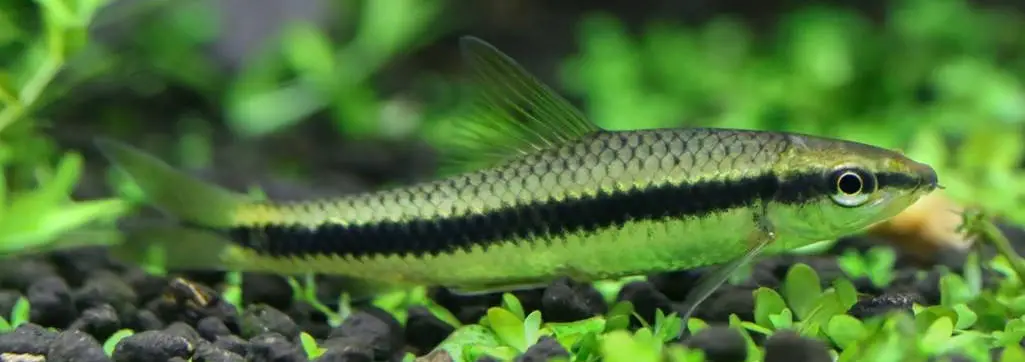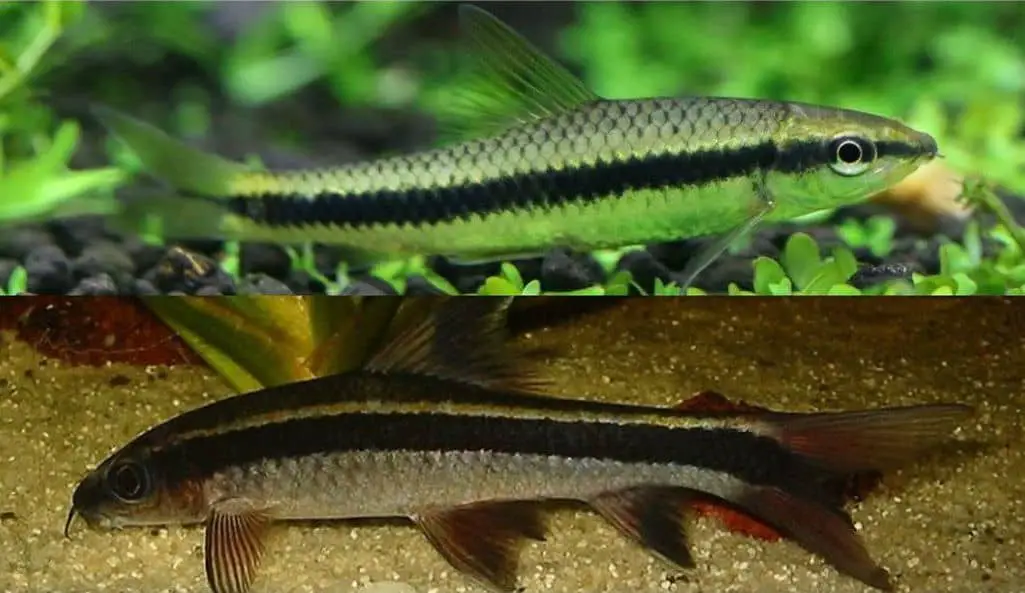Siamese Algae Eater vs Flying Fox
We all know that algae and algae blooms can be the cause of a lot of headaches for the responsible tank owner. People go to great lengths to control algae in their tank, including installing special aquatic plants, strong filter systems and even chemical treatments.
However, what if there was a natural, beneficial way to keep down the level of algae in your tank, with no additional harm to the ecosystem.
Algae eating fish are becoming more and more popular because of the threat of algae mentioned above. They naturally seek out and destroy any algae that threatens to take root in your tank, helping to keep the water clean and clear.
Two of the most widespread algae eating aquatic species are the Siamese algae eater and the flying fox.
These two species are somewhat similar and are often mistaken for each other, but in this comprehensive article we will discuss the merits and differences of the Siamese algae eater vs flying fox.
Table of Contents
Siamese Algae Eater

This small little fish is a member of the carp family and it has a voracious appetite for algae. It will happily draw in any algae present in your tube and destroy it. There are a number of other benefits as well.
For example, this fish is peaceable and friendly, meaning it is compatible with most other aquarium species and will thrive in a community setting. It is just a lowly bottom dweller, so it is most likely going to stay out of other fish’s business.
This is also quite a low maintenance fish. It is omnivorous, so it will eat a mixture of different foods and food types. In fact, the Siamese algae eater is a very opportunistic eater, meaning it will wolf down any food it comes across, including natural vegetation, algae, and any scraps of uneaten food that fall to the bottom.
Feeding the Siamese algae eater can be a delicate balance. He should not survive exclusively on leftovers and scraps, so you do need to provide a dedicated diet to meet their basic nutritional needs. But you should not over feed them, so they are still hungry enough to devour any algae they come across.
As bottom dwellers go, the Siamese algae eater is handsome enough. Although it is not the most colorful fish, it does have one bold black stripe on each side, which runs from head to tail. This can add a bit of interest and vibrancy to your tank. The rest of their body is usually a brownish-beige color. In terms of body shape, the Siamese algae eater is a slender fish which can grow to 6 inches in length, and they have an average lifespan of about 10 years.
This could be a wonderful addition to any freshwater, community aquarium. The minimum size for any such tank should be 20 gallons, and ideally neutral pH, heavily planted tanks are considered best. As well as interacting with the environment, this fish will go the extra mile and help with the cleaning and upkeep of the tank!
Flying Fox

With the fancy, unusual name, you might be surprised to learn that this is also an aquarium fish which is renowned for its algae eating abilities. Like its counterpart, this is a small, bottom dwelling fish that scavenges for its food in the wild. It is native to the shallow waters and streams of South-East Asia, such as in the countries of Indonesia, Borneo and Malaysia.
As well as encouraging them to eat any residual algae, you should provide them with a balanced diet to ensure they stay happy, healthy and strong. For example, most pellets and flake food that are designed for bottom dwellers should be suitable, so long as they have adequate crude protein and mineral content.
They also enjoy spirulina food, and you can supplement their diet with freeze-dried or live foods if you want to.
This is a peaceful fish that is well suited for a community environment. It has an average life span of 8-10 years, and it will grow to a length of about 5 inches at adult maturity. However, this fish is often stunted when in tanks, so you need to ensure that your tank is suitably large and not overstocked.
In terms of water quality and chemistry, this is a relatively hardy fish that can survive a range of conditions. However, it has a natural preference for softer water, with reasonable currents (from integrated filtration) and low levels of nitrates. This mimics its natural environment, and in these conditions it will be most healthy and least distressed.
Siamese Algae Eater vs Flying Fox

These two species perform a similar role in any tank, and unfortunately, they are a little bit difficult to tell apart.
For example, they are both a similar size, a similar color, and they both have the same distinctive black stripe extending from their mouth to their tail. If you look closely there are a few sure-fire signs to help tell them apart.
The biggest giveaway is the fleshy flap in the corner of the mouth of the flying fox. The Siamese algae eater does not have this feature. Also, the black band of the flying fox is generally straighter and smoother. In contrast the black band of the Siamese algae eater may appear more ragged and less uniform.
In addition, the fins of the flying fox are usually colored, while those of the Siamese algae eater are generally clear.
Conclusion
There is no doubt that is huge confusion in the aquarium community around the issue of the Siamese algae eater vs flying fox.
They have a very similar appearance, both being small, slender, dull-colored fish, with downward shaped mouths and a bold black stripe running the length of their bodies. However, once you look a bit closer, some differences do become apart, as we have outlined in this article.
For most purposes both these species serve the same purpose and the care routine for both is very similar.
However, if you want to know the exact recommended water conditions or fish food, then it is important to know which species you are dealing with.




